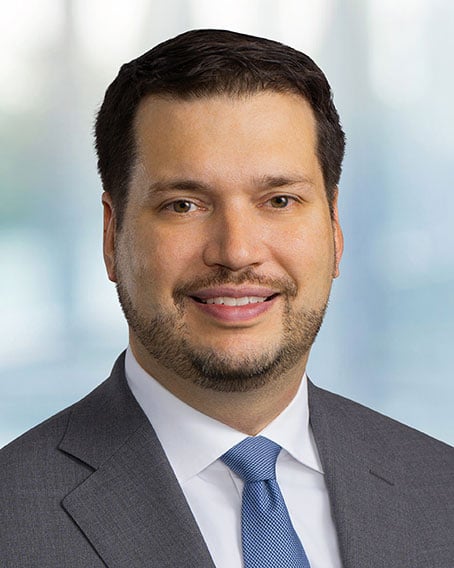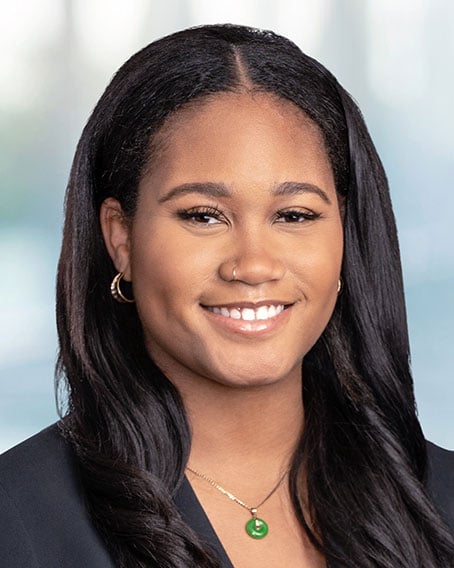On May 23, 2024, the National Collegiate Athletics Association (“NCAA”) announced that the Power Five college athletics conferences1 and the NCAA reached a $2.8 billion settlement in the consolidated antitrust litigation of three class action lawsuits filed by former student-athletes. The settlement is not yet final as it still needs to be approved by U.S. District Judge Claudia Wilken overseeing the antitrust litigation, and plaintiff class members will have the opportunity to opt out and pursue claims individually or challenge the terms of the agreement.2 Nonetheless, this development is a significant step toward the near reality of revenue sharing between schools and their student-athletes. This Alert addresses the settlement, including what remains unresolved, and what is ahead before the settlement becomes final.
What We Know About the Settlement Terms So Far
The proposed settlement covers three of the major class action lawsuits brought against the NCAA: House v. NCAA, Hubbard v. NCAA, and Carter v. NCAA. The full terms of the settlement have not yet been disclosed but the agreement reportedly calls for member conferences and the NCAA to pay $2.77 billion to more than 14,000 former and current student-athletes over ten years beginning as early as fall 2025 as damages for lost opportunities to enter into endorsement deals and share in media revenue.3 The funds to cover the settlement will largely come from the Power Five schools, as well as from NCAA reserve funds and insurance payouts.4 In addition, the settlement would introduce a going-forward compensation model allowing schools to share revenue with student-athletes. The compensation model allows—but does not require—schools to earmark an anticipated amount of $20 to 22 million5 in revenue per year to share with student-athletes, and schools would decide how that money is distributed among sports programs.6 The anticipated revenue terms include a ten-year escalator on the revenue-sharing cap, with 4% increases in years one through three, and a re-evaluation of the revenue sharing model in year four.7 Scholarship costs for schools will be in addition to revenue sharing, and scholarship caps will be replaced with new roster size restrictions.8
What the Settlement Terms Do Not Cover
The recent settlement proposal covers three antitrust lawsuits brought against the NCAA; however, there are a number of antitrust lawsuits that remain pending, including lawsuits that target the NCAA’s policies and rules on issues such as revenue sharing, transfer eligibility, recruitment-related compensation, prize money at non-NCAA events, employment status of student-athletes, Title IX, and immigration.
Revenue Sharing. Despite the NCAA’s attempts to bring the case under the House settlement, a U.S. District Court judge ruled on May 23, 2024 that the Fontenot v. NCAA case would remain in Colorado and proceed outside of the House settlement.9 The lawsuit alleges that the NCAA’s rules prohibiting athletes from receiving compensation from schools and conferences violate Section 1 of the Sherman Act by restraining competition, and is broader than the House case, which focuses on name, image and likeness (“NIL”) compensation.10
Transfer Eligibility. Several state attorneys general and the U.S. Department of Justice (“DOJ”) have challenged the NCAA’s multi-time transfer eligibility rule as an unlawful restraint of trade in violation of Section 1 of the Sherman Act.11 The NCAA ratified a revised transfer eligibility rule in 2021 by permitting student-athletes to transfer once between NCAA member institutions and maintain their eligibility. The revised rule, however, still requires student-athletes to sit out one year in residence and forego a season of eligibility if they transfer multiple times between NCAA schools. The plaintiff states and the DOJ allege that the rule unlawfully restrains athletes and hinders their ability to sell their NIL rights and control their education.12 In December 2023, U.S. District Judge John Preston Bailey enjoined the NCAA from enforcing the transfer eligibility rule,13 and in April 2024, the NCAA amended the rule to allow student-athletes to become immediately eligible to play as long as they meet academic eligibility requirements.14 On May 30, 2024, a proposed entry of consent judgment and permanent injunction was filed jointly by the plaintiff states and the NCAA, pursuant to which the NCAA would be permanently enjoined from (a) enforcing the transfer eligibility rule, (b) enforcing the rule of restitution (which allows the NCAA to retroactively take retaliatory action against student-athletes and schools for past conduct), (c) taking any action to retaliate against Division I member schools for conduct relating to the transfer eligibility rule, and (d) retaliating against student-athletes that transferred between NCAA member schools.15 It also states the NCAA would provide an additional year of eligibility to any Division I student-athlete who was deemed ineligible to compete for a season or any portion of a season of competition occurring during or since the 2019 to 2020 academic year because of the transfer eligibility rule, so long as the student-athlete meets certain requirements.16 The proposed entry of judgment remains subject to the approval of Judge Bailey.
Recruitment-Related Compensation and Collectives. The States of Tennessee, Florida, New York, the District of Columbia, and the Commonwealth of Virginia have sued the NCAA to challenge its recruitment rule.17 The plaintiffs argue that the NCAA’s rule that prohibits prospective student-athletes from negotiating NIL deals with third parties such as alumni and booster collectives, violates antitrust law.
Prize Money. University of North Carolina tennis player, Reese Brantmeier, has initiated a class action lawsuit against the NCAA.18 The lawsuit alleges that NCAA rules that restrain how much student-athletes can be paid at tournaments and non-NCAA competitions, such as events that are hosted by the U.S. Tennis Association, violate the Sherman Act.
Employment. In Johnson v. NCAA, a former Villanova University football player alleges that student-athletes are employees under the Fair Labor Standards Act and are entitled to minimum wage and overtime pay.19 Johnson’s suit contends that student-athletes should be paid for the time they spend in practice and competition. Additionally, in February 2024, the National Labor Relations Board ruled that players on the Dartmouth College basketball team are employees of the school.20 This ruling would allow for the student-athletes to form a labor union comprised of NCAA student-athletes, for the first time ever.21 On the other hand, a recently introduced house bill proposes that a student-athlete may not be “considered an employee of an institution, a conference, or an association based on participation in certain intercollegiate athletics.”22 The NCAA has been lobbying for a clear determination from Congress that student-athletes are not employees to avoid the uncertainty of allowing that issue to be decided by courts.
Title IX. The proposed revenue sharing model created by the settlement will likely be subject to Title IX requirements for schools receiving federal funding. Title IX demands equal opportunity based on sex23 and equal treatment of female and male student-athletes in the provision of publicity, promotions, support services, and recruitment. Under the proposed settlement terms, schools will have discretion in distributing revenue to student-athletes which may raise concerns if male and female student-athletes do not receive equal opportunity or treatment of revenue sharing.24
Immigration. The proposed revenue sharing model raises questions for student-athletes that are not U.S. citizens and are in the U.S. with temporary status (e.g., F-1 visas). Currently, NIL compensation for such student-athletes constitutes a legal gray area, with violations posing a threat of ineligibility. It remains to be seen whether this will be addressed by the proposed settlement terms.
What’s Ahead and Open Questions
The Settlement Terms Are Not Final. As mentioned above, the settlement must still be approved by Judge Wilken, who must determine if the settlement terms are fair, reasonable, and adequate to all of the class members.25 Class members will likely not be paid identical amounts under the settlement terms because they play a variety of sports at different schools, so Judge Wilken will evaluate whether student-athletes in very different circumstances are all compensated fairly. Class members who are not content with the settlement terms could opt out and retain their right to sue the NCAA and the Power Five conferences individually.
The NCAA is Not Exempt from Future Litigation. The NCAA also remains subject to future antitrust litigation, particularly with respect to rules and regulations relating to eligibility and compensation for student-athletes. Congress has not provided the NCAA an antitrust exemption, despite the NCAA’s lobbying efforts to secure one. Judicially-created exemptions from the antitrust laws are likewise disfavored absent a clear congressional mandate. As a result, Major League Baseball is the only major sport in the U.S. with a general exemption from the antitrust laws, thanks to a 1922 Supreme Court decision. Other professional sports leagues rely only on a non-statutory labor exemption that permits them to negotiate collective bargaining agreements (“CBAs”) with player unions. Where such a CBA concerns the terms and conditions of employment and is the result of arms-length bargaining, the non-statutory exemption immunizes both the professional leagues and unions from antitrust liability. The NCAA could not benefit from that exemption if it succeeds in its efforts to obtain congressional legislation declaring that student-athletes may not engage in collective bargaining and are not employees.26
Effect on School Athletics. Going forward, it is unclear which schools and student-athletes will participate in the revenue sharing model created by the settlement because the settlement merely allows schools to “opt in” to revenue sharing without requiring it. Presumably, if a school does opt to share revenue with student-athletes, then student-athletes in the top revenue-generating sports will be most likely to participate, but the distributions will likely vary from school to school. This could lead to student-athletes transferring to schools that prioritize distributions to the sports that they play. Furthermore, revenue sharing between schools and student-athletes could lead to schools cutting sports programs that do not generate enough revenue. Notably, schools should make their revenue sharing decisions independently and without consulting or reaching any agreement with competing schools; a refusal of all or most schools to share revenues may lead to further antitrust litigation from student-athletes alleging the refusal is the result of unlawful coordinated activity.
Effect on Booster Collectives and NIL Deals. Under the terms of the settlement, schools will be directly compensating student-athletes through revenue sharing and NCAA restrictions prohibiting schools from directly engaging in NIL deals with student-athletes may be lifted in the near future.27 If such restrictions are lifted, it is unclear what role third party booster collectives will play in student-athlete compensation. The proposed settlement terms, while not yet finalized, exclude third-party NIL compensation as part of the revenue cap, which could lead to more income opportunity for student-athletes at enterprising institutions and a greater imbalance in the revenue landscape.28
Compliance. The settlement has not yet been approved, and current NCAA rules remain in effect. It is important for schools, booster collectives, student-athletes, coaches, and other stakeholders to ensure that they remain in compliance with applicable state law and current NCAA and university rules.
The agreed-upon settlement terms are a step forward in the NCAA’s desire for a clear and consolidated resolution of pending legal challenges and signal an unprecedented (and now likely inevitable) new world order of student-athlete compensation. However, this is far from the end of such developments, and we will continue to monitor this evolving landscape and the implications of such changes for stakeholders.
- The Power Five college athletics conferences are the Atlantic Coast Conference (“ACC”), the Big Ten Conference, the Big 12 Conference, the Pacific-12 (“Pac-12”) Conference, and the Southeastern Conference (“SEC”).
- Ralph D. Russo, NCAA, leagues back $2.8 billion settlement, setting stage for current, former athletes to be paid, Associated Press (May 23, 2024), https://apnews.com/article/ncaa-settlement-b6ff58d62f93359789dde1626f827bf1.
- Id.
- Id.
- The figure is based on an average of Power Five conference revenue streams (approximately $100 million) to determine an annual revenue sharing limit, anticipated at roughly 20% of average athletic department revenue. NCAA Settlement Q&A: How Will Schools Distribute Revenue, What is the Future of NIL Collectives and More, Yahoo Sports (May 24, 2024), https://sports.yahoo.com/ncaa-settlement-qa-how-will-schools-distribute-revenue-what-is-the-future-of-nil-collectives-and-more-125519681.html.
- Id.
- Id.
- Id.
- Eric Prisbell, Judge Rules Fontenot v. NCAA Case Will Proceed Outside of House Settlement, On3 (May 23, 2024), https://www.on3.com/os/news/judge-rules-fontenot-v-ncaa-case-will-proceed-outside-of-house-settlement/
- Katie Arcieri, Colorado Antitrust Suit Against NCAA Keeps Athlete Claims Alive, Bloomberg (May 28, 2024), https://news.bloomberglaw.com/antitrust/colorado-antitrust-suit-against-ncaa-keeps-athlete-claims-alive.
- Mike Scarcella, US Justice Dept, More States Join Lawsuit Over NCAA Athlete Transfers, Reuters (Jan. 18, 2024), https://www.reuters.com/legal/litigation/us-justice-dept-more-states-join-lawsuit-over-ncaa-athlete-transfers-2024-01-18/
- Amended Complaint for Injunctive Relief, Ohio et al v. NCAA, 1:23-cv-100 (N.D.W. Va. Dec. 7, 2023).
- Order, Ohio et al v. NCAA, 1:23-cv-100 (N.D.W. Va. Dec. 7, 2023).
- Division I Council approves changes to transfer rules, NCAA (Apr. 17, 2024), https://www.ncaa.org/news/2024/4/17/media-center-division-i-council-approves-changes-to-transfer-rules.aspx.
- Joint Motion of Plaintiff States and Defendant National Collegiate Athletic Association for Entry of Consent Judgment and Permanent Injunction, Ohio et al v. NCAA, 1:23-cv-100 (N.D.W. Va. Dec. 7, 2023).
- The student-athlete (a) must have transferred between two member institutions more than once; (b) is currently enrolled at a Division I member school; and (c) is currently eligible to compete, or their eligibility expired at the end of a season of competition completed during the 2023-2024 academic year. Id.
- Mike Scarcella, Florida, New York join states’ lawsuit against NCAA over recruitment rule, Reuters (May 1, 2024), https://www.reuters.com/legal/litigation/florida-new-york-join-states-lawsuit-against-ncaa-over-recruitment-rule-2024-05-01/
- Mike Scarcella, NCAA Sued Over Prize-Money Restrictions on Student Athletes, Reuters (Mar. 19, 2024), https://www.reuters.com/legal/litigation/ncaa-sued-over-prize-money-restrictions-student-athletes-2024-03-19/
- Richard Johnson, Explaining What’s at Stake Wednesday in Johnson v. NCAA Hearing, Sports Illustrated, (February 15, 2023), https://www.si.com/college/2023/02/15/johnson-v-ncaa-court-hearing-employment-status
- Jimmy Golen & Ralph D. Russo, U.S. Labor Official Says Dartmouth Basketball Players Are School Employee, Sets Stage for Union Vote, AP News (Feb. 6 2024), https://apnews.com/article/dartmouth-basketball-union-ncaa-employees-19839a9afb5c8048a015cbcb86c0e25b
- Id.
- H.R. 8534, 118th Cong. (2024).
- Title IX and Athletic Opportunities in Colleges and Universities, U.S. Dep’t of Education (Feb. 2023), https://www2.ed.gov/about/offices/list/ocr/docs/ocr-higher-ed-athletic-resource-202302.pdf.
- Title IX Frequently Asked Questions, NCAA (Jan. 27, 2014), https://www.ncaa.org/sports/2014/1/27/title-ix-frequently-asked-questions.aspx.
- Michael McCann, NCAA’s Antitrust Settlement Has Plenty of Red Flags, Sportico (May 22, 2024), https://www.sportico.com/law/analysis/2024/ncaa-antitrust-settlement-red-flags-1234780001/; Fed. R. Civ. P. 23(e).
- Michael McCann, NCAA, Power Five OK $2.7 Billion Antitrust Settlement, Sportico (May 23, 2024), https://www.sportico.com/law/analysis/2024/ncaa-antitrust-settlement-1234780061/.
- The NCAA’s prohibition on direct institutional payment for a student-athletes’ NIL remains in place and unchallenged as of May 2024. NIL Round-Up: New Permissible Uses of NIL and Other Forms of Student-Athlete Compensation, Ropes & Gray LLP (Apr. 17, 2024), https://www.ropesgray.com/en/insights/alerts/2024/04/nil-roundup-new-permissible-uses-of-nil-and-other-forms-of-student-athlete-compensation.
- Ross Dellenger, The Next Evolution of NIL Collectives and The Battles That Await: ‘This Is a Big Inflection Point’, Yahoo Sports (May 28, 2024), https://sports.yahoo.com/the-next-evolution-of-nil-collectives-and-the-battles-that-await-this-is-a-big-inflection-point-120051261.html.
Stay Up To Date with Ropes & Gray
Ropes & Gray attorneys provide timely analysis on legal developments, court decisions and changes in legislation and regulations.
Stay in the loop with all things Ropes & Gray, and find out more about our people, culture, initiatives and everything that’s happening.
We regularly notify our clients and contacts of significant legal developments, news, webinars and teleconferences that affect their industries.








